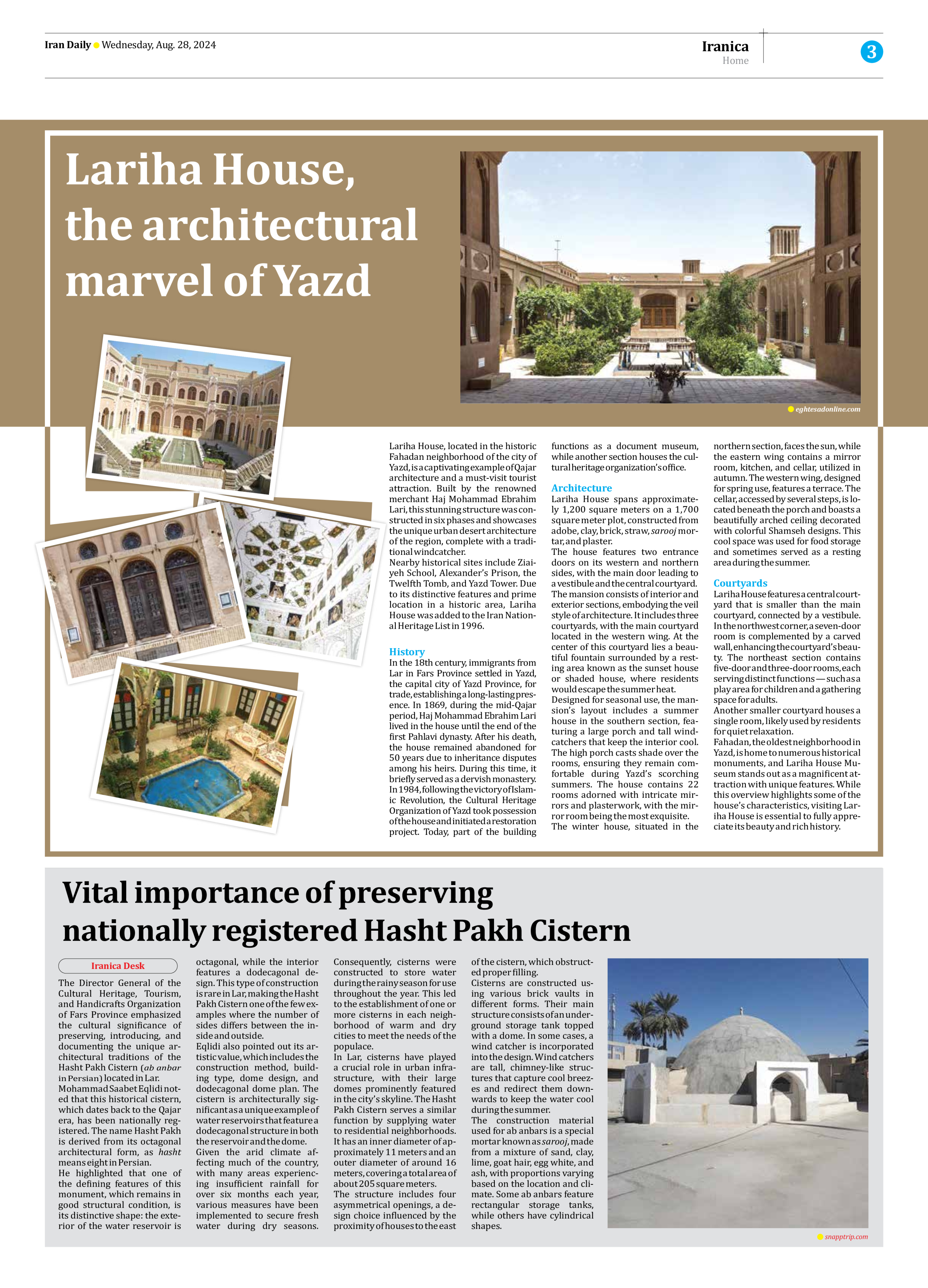
Vital importance of preserving nationally registered Hasht Pakh Cistern
The Director General of the Cultural Heritage, Tourism, and Handicrafts Organization of Fars Province emphasized the cultural significance of preserving, introducing, and documenting the unique architectural traditions of the Hasht Pakh Cistern (ab anbar in Persian) located in Lar.
Mohammad Saabet Eqlidi noted that this historical cistern, which dates back to the Qajar era, has been nationally registered. The name Hasht Pakh is derived from its octagonal architectural form, as hasht means eight in Persian.
He highlighted that one of the defining features of this monument, which remains in good structural condition, is its distinctive shape: the exterior of the water reservoir is octagonal, while the interior features a dodecagonal design. This type of construction is rare in Lar, making the Hasht Pakh Cistern one of the few examples where the number of sides differs between the inside and outside.
Eqlidi also pointed out its artistic value, which includes the construction method, building type, dome design, and dodecagonal dome plan. The cistern is architecturally significant as a unique example of water reservoirs that feature a dodecagonal structure in both the reservoir and the dome.
Given the arid climate affecting much of the country, with many areas experiencing insufficient rainfall for over six months each year, various measures have been implemented to secure fresh water during dry seasons. Consequently, cisterns were constructed to store water during the rainy season for use throughout the year. This led to the establishment of one or more cisterns in each neighborhood of warm and dry cities to meet the needs of the populace.
In Lar, cisterns have played a crucial role in urban infrastructure, with their large domes prominently featured in the city’s skyline. The Hasht Pakh Cistern serves a similar function by supplying water to residential neighborhoods. It has an inner diameter of approximately 11 meters and an outer diameter of around 16 meters, covering a total area of about 205 square meters.
The structure includes four asymmetrical openings, a design choice influenced by the proximity of houses to the east of the cistern, which obstructed proper filling.
Cisterns are constructed using various brick vaults in different forms. Their main structure consists of an underground storage tank topped with a dome. In some cases, a wind catcher is incorporated into the design. Wind catchers are tall, chimney-like structures that capture cool breezes and redirect them downwards to keep the water cool during the summer.
The construction material used for ab anbars is a special mortar known as sarooj, made from a mixture of sand, clay, lime, goat hair, egg white, and ash, with proportions varying based on the location and climate. Some ab anbars feature rectangular storage tanks, while others have cylindrical shapes.






